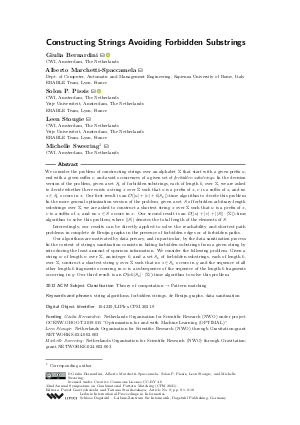LIPIcs.CPM.2021.9.pdf
- Filesize: 0.89 MB
- 18 pages

 Creative Commons Attribution 4.0 International license
Creative Commons Attribution 4.0 International license





Feedback for Dagstuhl Publishing